Abstract
OBJECTIVE--To assess how effectively a routine adjustment can be made for socio-economic confounding in small area studies of environment and health using indirect standardisation and small area deprivation indices, including analysis of the appropriate size of population unit on which to base the deprivation index and the importance of region and urban/rural status as axes of stratification. METHODS--Standardised morbidity ratios were calculated for cancers in Great Britain for 1981 and standardised mortality ratios for all cause mortality in Great Britain between 1982 and 1985. Deprivation indices were calculated for enumeration districts and wards from 1981 small area census statistics. Cancers and deaths were allocated to enumeration districts via their postcode. Standardised morbidity and mortality ratios were calculated by quintile of enumeration district according to the deprivation index. Standardised mortality ratios were further analysed by deprivation of ward, region, and urban/rural status. RESULTS--Strong relationships were found between all cause mortality and the incidence of selected cancers and deprivation quintile-there was up to a twofold difference in lung cancer incidence between the highest and lowest quintile. The deprivation index can be used to measure gradients of deprivation according to the distance from industrial sites. The deprivation index for enumeration districts showed similar discrimination of mortality as the index forwards. There is some interaction between deprivation and region in their effect on the standardised mortality ratios, leading to a small bias in the estimation of expected numbers if this is not taken into account. The relationship between deprivation, urban/rural status, and mortality is complex and confounded by region, but mortality tends to be higher in urban than in rural areas within quintiles of deprivation. DISCUSSION--Whether calculated for enumeration districts or wards, the main problems in the interpretation of the deprivation index may be its limited correlation with the risk factors of interest and its concentration on present rather than past socioeconomic status. Indirect standardisation based on stratification for deprivation and other variable involves a trade off between bias and precision in determining the fineness and the number of axes of stratification. Some bias may occur due to interaction between region and deprivation and the effects of urban/rural status. Complementary approaches including modeling and proportional mortality or morbidity analyses may be needed and the possibility of residual socioeconomic confounding must always be considered. CONCLUSION--There is potential for important socioeconomic confounding in small area studies of environmental pollution and health where the health outcome under examination has a strong relationship to socioeconomic status and where the putative excess risk due to pollution may be small. One method of controlling for confounding is to use an ecological measurement of deprivation in small areas, and to adjust for deprivation by indirect standardisation. However, residual socioeconomic confounding can be expected, which may seriously complicate the interpretation of small area studies.
Full text
PDF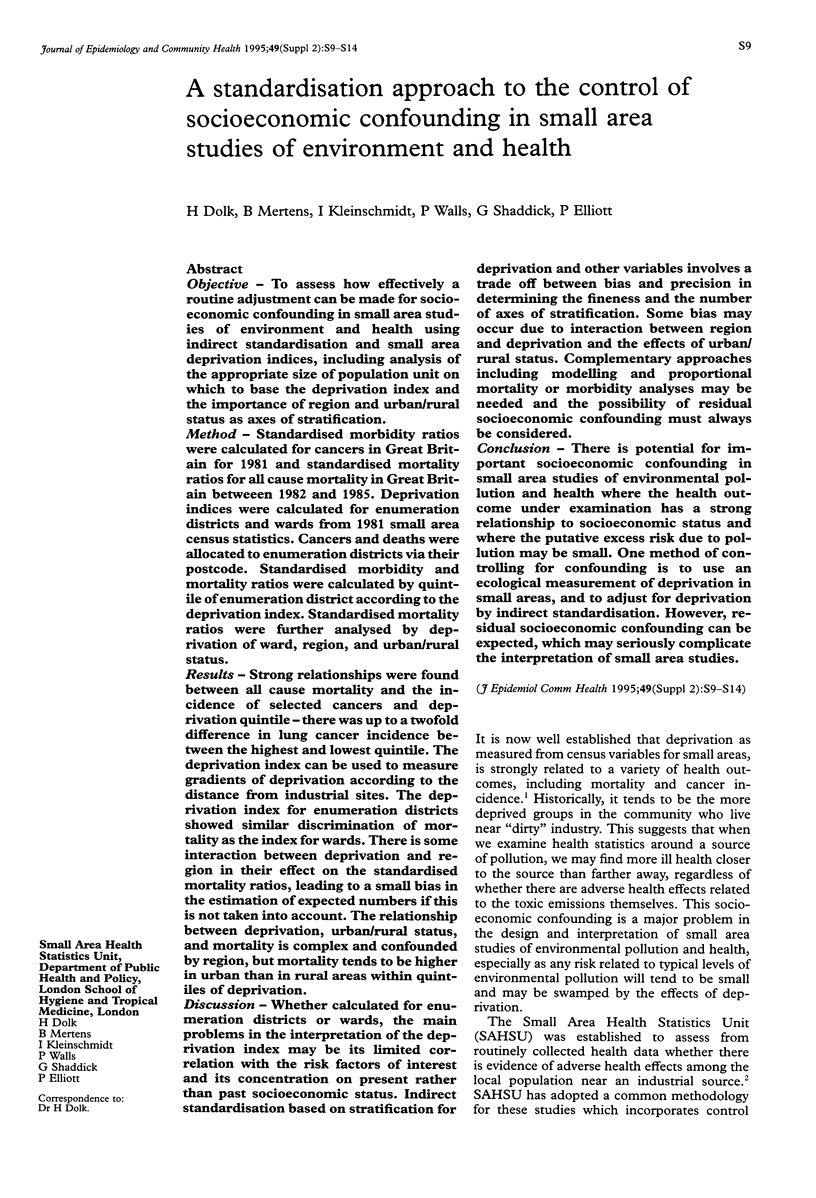
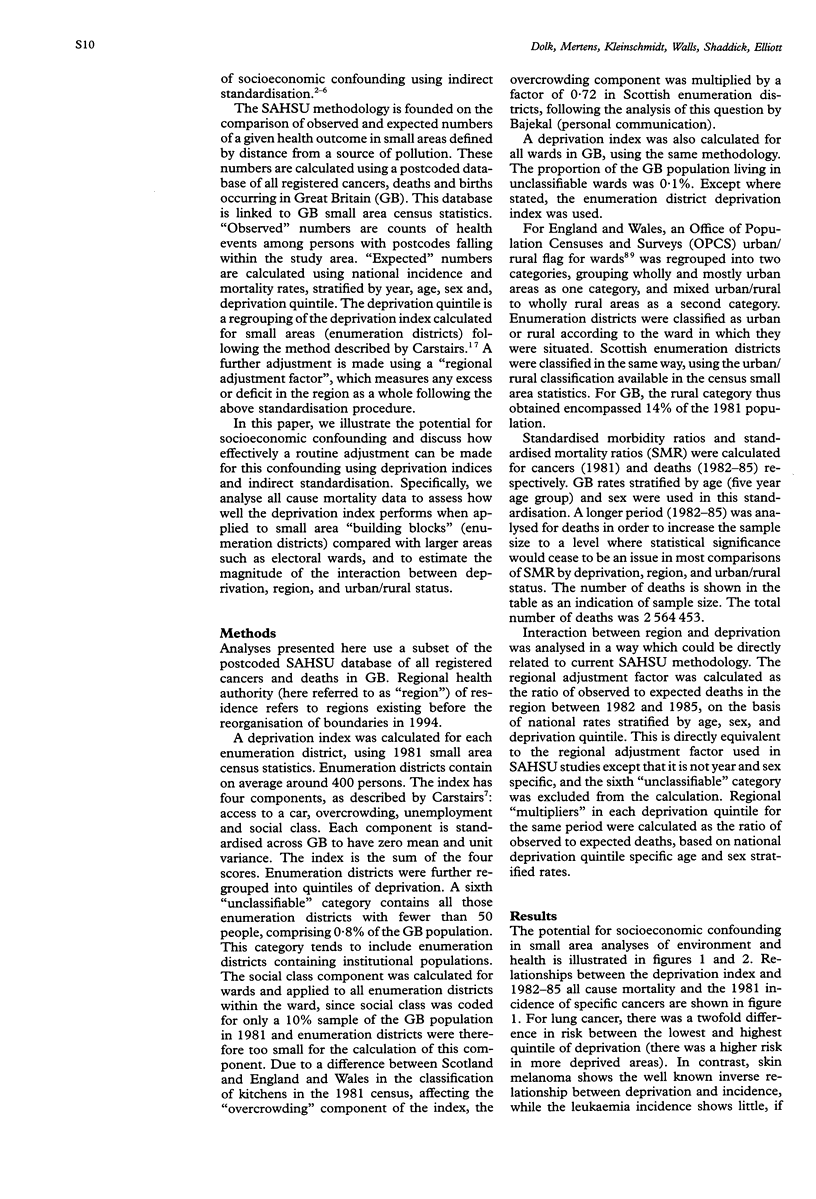
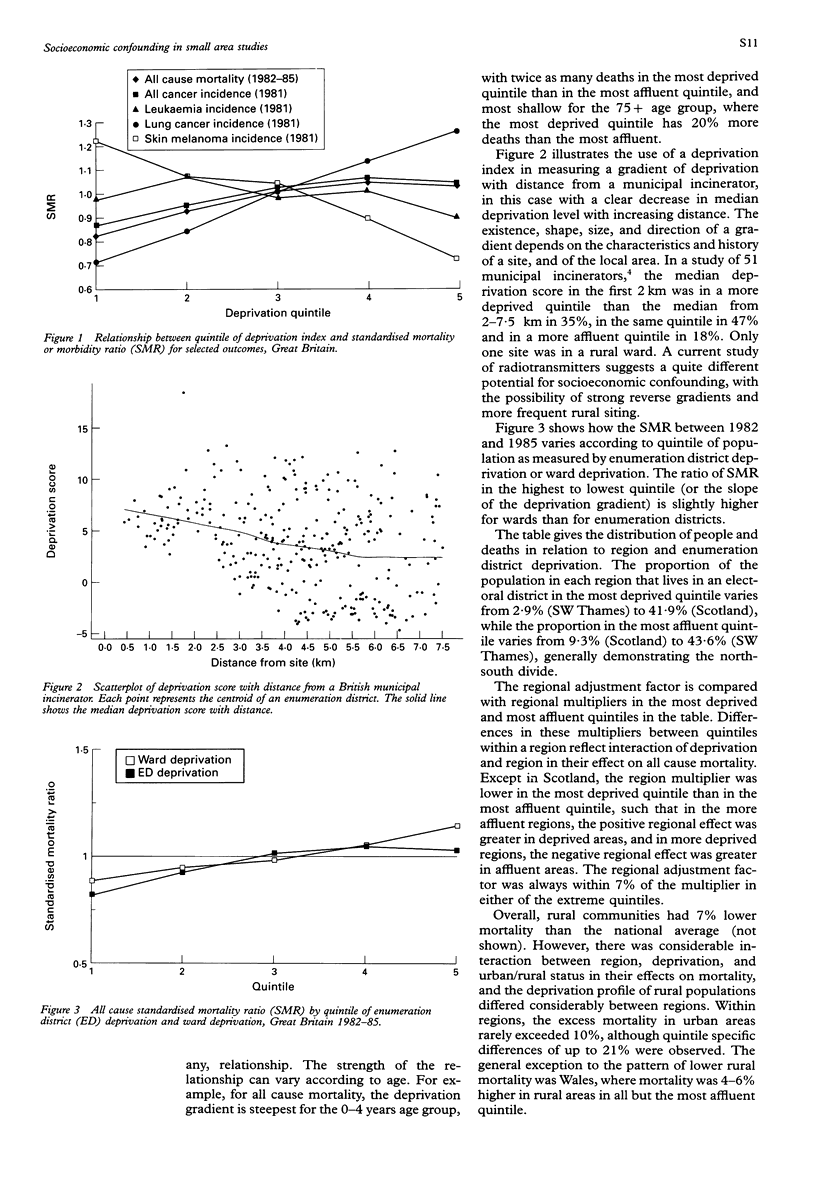
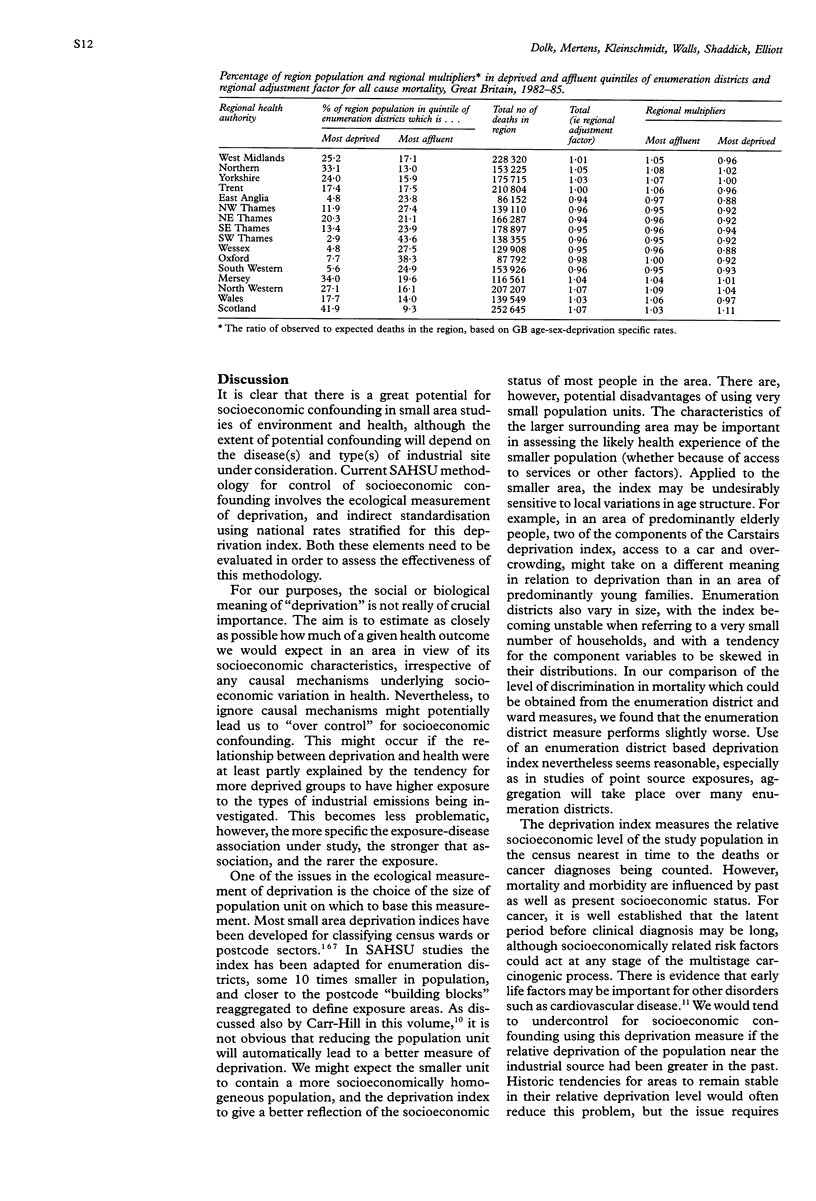
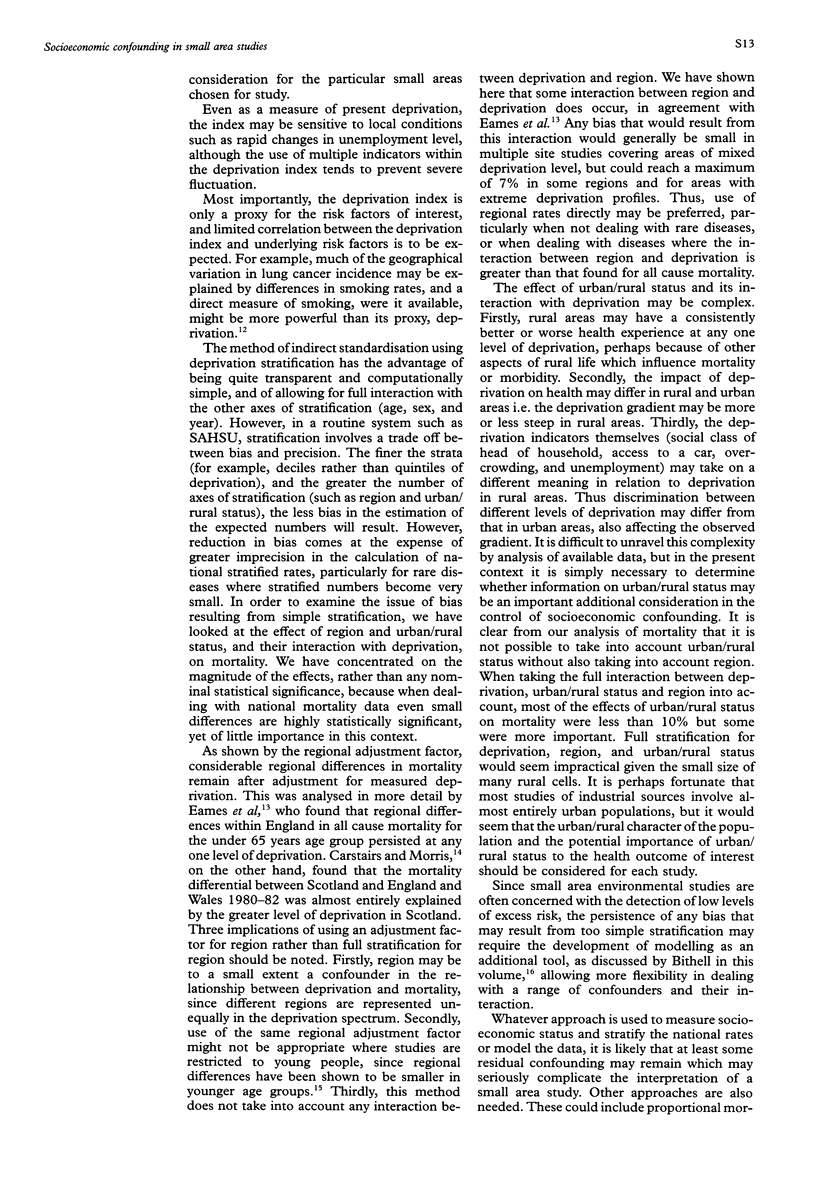
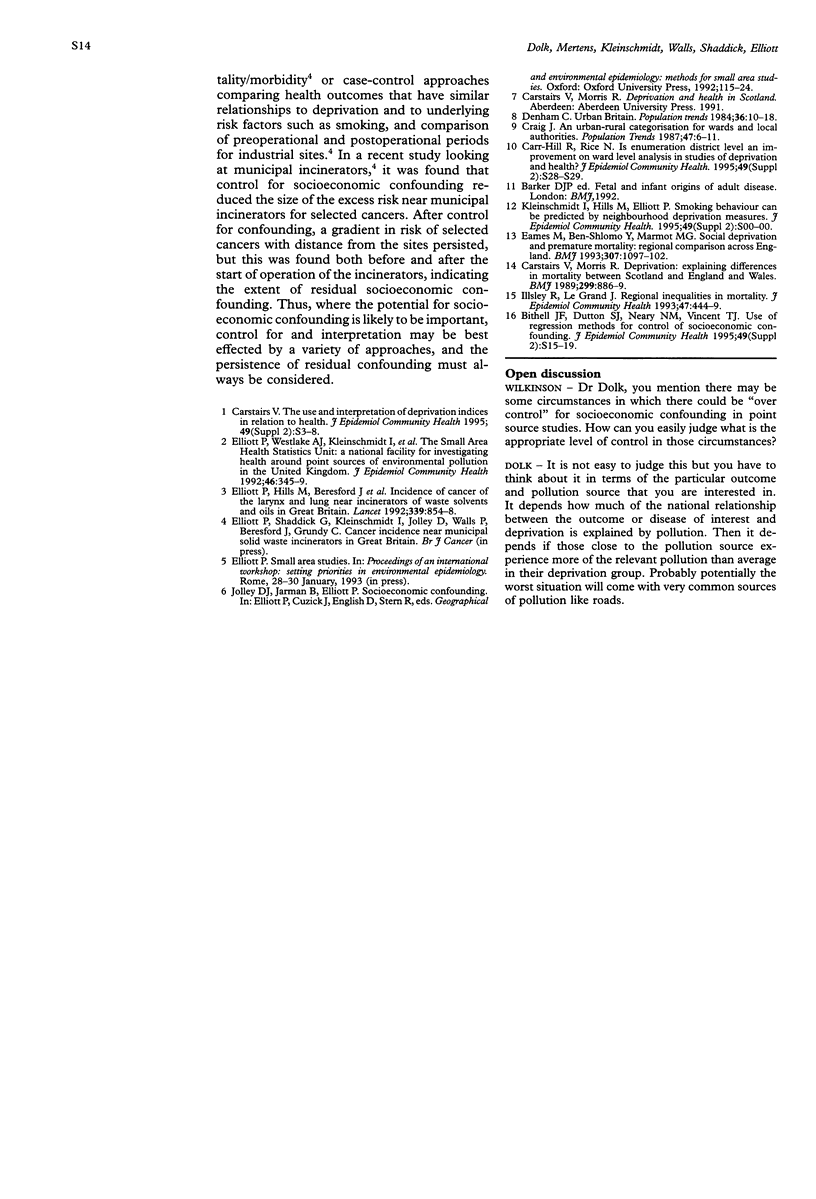
Selected References
These references are in PubMed. This may not be the complete list of references from this article.
- Bithell J. F., Dutton S. J., Neary N. M., Vincent T. J. Controlling for socioeconomic confounding using regression methods. J Epidemiol Community Health. 1995 Dec;49 (Suppl 2):S15–S19. doi: 10.1136/jech.49.suppl_2.s15. [DOI] [PMC free article] [PubMed] [Google Scholar]
- Carr-Hill R., Rice N. Is enumeration district level an improvement on ward level analysis in studies of deprivation and health? J Epidemiol Community Health. 1995 Dec;49 (Suppl 2):S28–S29. doi: 10.1136/jech.49.suppl_2.s28. [DOI] [PMC free article] [PubMed] [Google Scholar]
- Carstairs V. Deprivation indices: their interpretation and use in relation to health. J Epidemiol Community Health. 1995 Dec;49 (Suppl 2):S3–S8. doi: 10.1136/jech.49.suppl_2.s3. [DOI] [PMC free article] [PubMed] [Google Scholar]
- Carstairs V., Morris R. Deprivation: explaining differences in mortality between Scotland and England and Wales. BMJ. 1989 Oct 7;299(6704):886–889. doi: 10.1136/bmj.299.6704.886. [DOI] [PMC free article] [PubMed] [Google Scholar]
- Eames M., Ben-Shlomo Y., Marmot M. G. Social deprivation and premature mortality: regional comparison across England. BMJ. 1993 Oct 30;307(6912):1097–1102. doi: 10.1136/bmj.307.6912.1097. [DOI] [PMC free article] [PubMed] [Google Scholar]
- Elliott P., Hills M., Beresford J., Kleinschmidt I., Jolley D., Pattenden S., Rodrigues L., Westlake A., Rose G. Incidence of cancers of the larynx and lung near incinerators of waste solvents and oils in Great Britain. Lancet. 1992 Apr 4;339(8797):854–858. doi: 10.1016/0140-6736(92)90290-j. [DOI] [PubMed] [Google Scholar]
- Elliott P., Westlake A. J., Hills M., Kleinschmidt I., Rodrigues L., McGale P., Marshall K., Rose G. The Small Area Health Statistics Unit: a national facility for investigating health around point sources of environmental pollution in the United Kingdom. J Epidemiol Community Health. 1992 Aug;46(4):345–349. doi: 10.1136/jech.46.4.345. [DOI] [PMC free article] [PubMed] [Google Scholar]
- Illsley R., Le Grand J. Regional inequalities in mortality. J Epidemiol Community Health. 1993 Dec;47(6):444–449. doi: 10.1136/jech.47.6.444. [DOI] [PMC free article] [PubMed] [Google Scholar]


